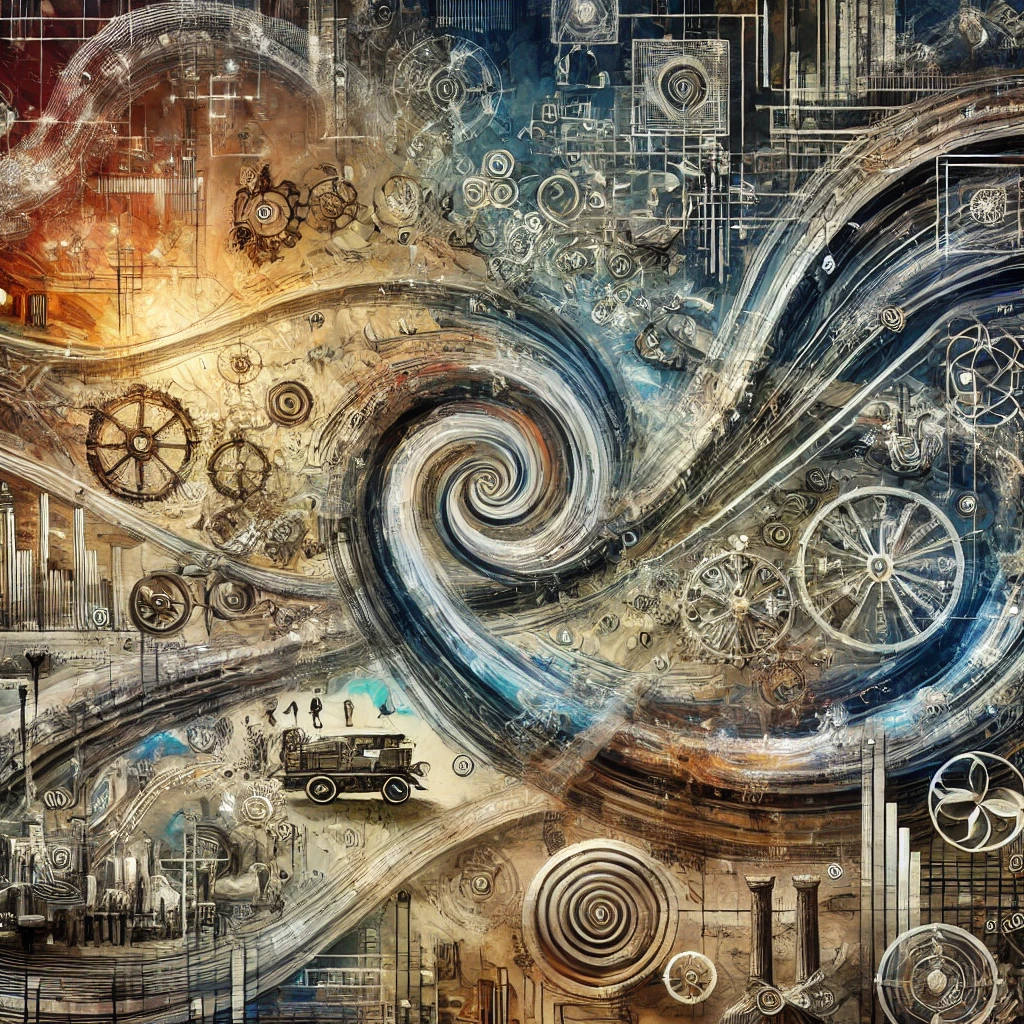Yuval Noah Harari’s Sapiens has kept its place on the NYT bestsellers list for years, and with it, he’s reshaped how we view human history. His sweeping, bold narrative about humanity’s evolutionary rise has captured the attention of millions of readers, but there’s something deeply flawed about the way he and others like him shape our human story. The truth is, the way we tell the history of human civilization is often grossly oversimplified and deeply, worryingly misleading (at best).
In fact, Sapiens is simply the latest installment in a long tradition of linear, Western-centric historiographies that paint human history as a predictable, unidirectional march toward modernity. Harari, like Francis Fukuyama in The End of History or Steven Pinker in The Better Angels of Our Nature, is not alone in imagining human development as a straight line, steadily progressing from primitive to advanced. These narratives, while captivating and easy to understand because they lack essential nuance, largely ignore the rich diversity of human experiences and the complex, unpredictable forces that have shaped our tangled history.
The linear model of history is particularly frustrating because it’s based on a set of assumptions that reflect more about the societies telling the stories than the actual truth. Western thinkers like Harari often depict a trajectory: hunter-gatherers gave way to farmers, then to city-dwellers, then to the complex civilizations we inhabit today. According to these frameworks, we’re living in the apex of human achievement—modern, enlightened, and perfectly rational. But this is a simplistic, almost hubristic view of the human story, a view that tends to dismiss the messiness of history and the many counterfactual trajectories that human societies could have veered off.
The problem with these linear interpretations is that they oversimplify the true dynamics of history. History, like evolution, is nonlinear, shaped by countless variables—psychological, social, political, and even random chance. To reduce the complexities of human existence to a tidy, progressive story is a disservice to the incredible variety of human experiences across time and space. The complexity of the past cannot be boiled down to neat stages of development, as if human civilization was always destined to become what it is today.
What Sapiens gets right, if anything, is Harari’s ability to distill broad swaths of human history into accessible prose. But while his writing is engaging, it’s also reductive. A more nuanced, complex understanding of human history is possible—one that embraces ambiguity and plurality rather than force-fitting events into a linear narrative.
Non-linear historiographies offer a better way forward. They reject the idea that history is a story with a singular, inevitable outcome. Instead, they embrace the chaotic, uncertain nature of human life. These alternative models don’t shy away from complexity; they revel in it. They acknowledge that history is not just about progress but about a messy web of competing ideas, cultures, and forces that constantly shift and reshape the world. Non-linear approaches open the door to multiple narratives, offering a fuller, richer understanding of the past.
Consider the revolution in our understanding of human prehistory in recent decades. Advancements in archaeology, anthropology, and evolutionary biology have peeled back layers of history that were previously obscured. What we once assumed about early human societies is being overturned. Our ancestors, far from being simple, isolated bands of hunter-gatherers, were capable of complex, diverse ways of organizing societies. They experimented with agriculture and discarded it, built urban centers without centralized political systems, and shifted between different forms of governance, from egalitarian to authoritarian, based on their circumstances. This doesn’t fit into the neat stages of history suggested by linear historiographies. It’s messy, fragmented, and deeply fascinating.
David Wengrow and the late David Graeber’s The Dawn of Everything challenges the traditional linear view, presenting a world in which early humans engaged in a variety of social and political experiments, many of which have been ignored or misunderstood by mainstream historical narratives. Their work is a reminder that the human story is far more diverse and complex than we’ve been led to believe. From ancient societies that embraced both equality and hierarchy, to cities built without kings, the evidence increasingly points to a human history full of options and possibilities, not just a steady march toward the present.
In light of these findings, the conventional history we’ve been taught seems woefully inadequate. For centuries, we’ve been fed stories about a linear progression of human civilization, but this model is crumbling under the weight of new evidence. The history of humanity is anything but linear. It is a tangled mess of choices, accidents, and shifts, shaped by the forces of biology, culture, and environment. Rather than a steady ascent toward modernity, human history is a series of ebbs and flows, with societies rising, falling, and evolving in ways we can’t predict.
This shift in perspective isn’t just about the past; it’s about how we understand ourselves today. As new scientific methods and interdisciplinary approaches emerge, we see that history is more than just a story of “progress.” It’s a story of adaptation, of trial and error, and of the constant interplay between the individual and the collective. Just as the sciences have moved away from trying to find one-size-fits-all explanations for complex phenomena, so too should our approach to history. The more we understand about the forces shaping our past, the more we realize that human history can’t be explained by a single narrative—it is a mosaic, a patchwork of different paths, each with its own story to tell.
At the end of the day, history isn’t a fixed, linear path. History is a field of infinite possibilities and counterfactuals. Embracing this complexity isn’t just some academic exercise—it’s a way of understanding who we are, where we’ve been, and where we might be going. The more we resist the urge to simplify, the more we can appreciate the rich diversity of human experiences and the full breadth of our history. The real story of humanity isn’t one of linear progress—it’s one of constant adaptation, reimagining, and reshaping. It’s about rises and falls, falls and rises—over and over and over again, played out over the deep time of evolutionary history. And it’s about damn time we start telling it that way.

